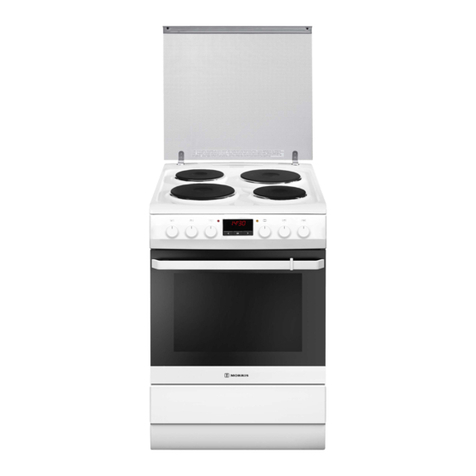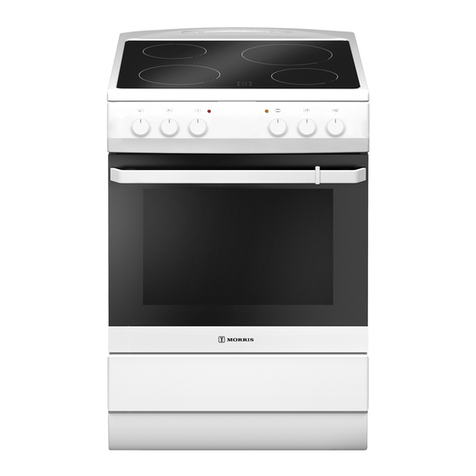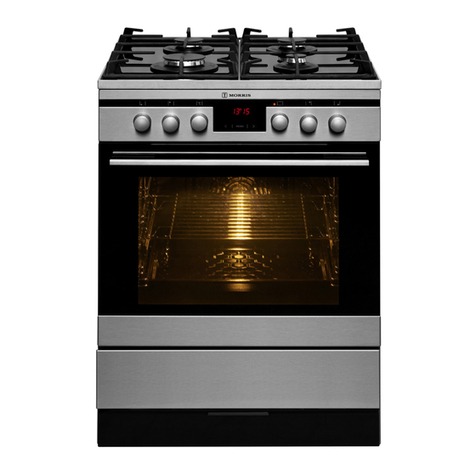
7
SAFETY INSTRUCTIONS
Do not make your own alterations to the cooker in order to adapt it to a dierent type
of gas, move the cooker to another place or make changes to the power supply. These
operations may only be carried out by an authorised electrician or tter.
Do not use harsh cleaning agents or sharp metal objects to clean the door as they can
scratch the surface, which could then result in the glass cracking.
Keep young children and people not acquainted with the instruction manual away from
the cooker.
IN CASE OF ANY SUSPICION OF GAS LEAKAGE YOU MUST NOT:
light matches, smoke cigarettes, switch electrical receivers (door bell or light switch) on
and o, or use other electric and mechanical devices that create electrical or percussive
sparks. In such a case, immediately close the cylinder valve or tap cutting o gas supply,
air the room, and then call a person authorised to repair the source of the leakage.
In the event of any incident caused by a technical fault, disconnect the power (applying
the above rule) and report the fault to the service centre to be repaired.
Do not attach any antenna cords (e.g. radio) to the gas supply.
In a case of gas escaping from leaky piping and catching re, close gas supply immediately
using a cutting-o valve.
In a case of gas escaping from a leaky cylinder and catching re: throw a wet blanket over
the cylinder to cool it down and turn o the cylinder valve. After it has cooled down, take
the cylinder out to an open space. Do not use the damaged cylinder.
When the cooker is not to be used for several days, close the main valve on the gas pip-
ing; when using a gas cylinder, close it after each use.
Using the appliance for cooking and baking results in the emission of heat and moisture in
the room in which it is installed. Make sure that kitchen is well ventilated. Natural ventila-
tion openings or forced mechanical ventilation (exhaust hood) should be available.
Prolonged intensive use of the appliance may require additional ventilation, for example,
opening a window or a more eective ventilation, such as increasing eciency of mechani-
cal ventilation, if applicable.
The appliance has been designed only for cooking. Any other use (for example for heat-
ing) does not comply with its operating prole and may cause danger.































